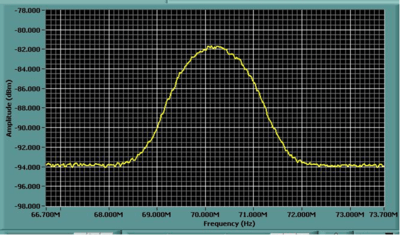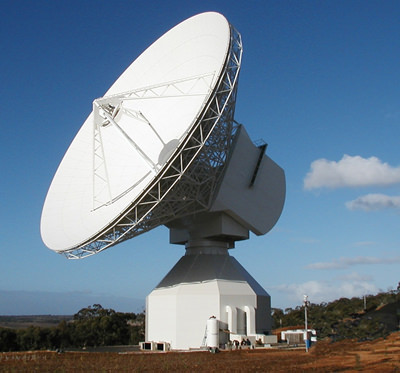[/caption]
For the first time in spaceflight history, a satellite has used mobile phone technology to radio back to Earth. The Herschel spacecraft – which launched on May 14, called home two days later using the same technology used in GSM mobile phone networks to send test data to ESA’s deep space tracking station. “Herschel’s 1.5-Mbps test transmission – roughly the same data rate provided by a home broadband Internet connection – was picked up at ESA’s ESTRACK station at New Norcia, Australia, on Saturday, as the satellite was travelling some 280 000 km from Earth,” said John Dodsworth, the Herschel-Planck Flight Operations Director.
This marks the first-ever use of Gaussian Minimum Shift Keying (GMSK) modulation in space. GMSK is commonly used in Global System for mobile Communication (GSM) mobile phone networks due to its very efficient use of bandwidth and power.

In a typical GSM mobile phone network, the same technology transmits data at a somewhat lower speed. The Planck spacecraft that was launched along with Herschel also uses GMSK technology, and its transmission capability will be tested later during the satellite’s commissioning phase.
During their missions, the GMSK-based radio links will be used by both spacecraft to transfer data gathered by their scientific instruments and on-board subsystems, providing information on flight status and overall health.
The development was driven by the need to use bandwidth more efficiently in view of the growing number of ESA missions that require X-band communications via the Agency’s deep space ground stations.
The GSM standard is the most popular modulation standard for mobile phone networks in the world. According to the GSM Association, terrestrial GSM networks now cover more than 80% of the world’s population in more than 212 countries and territories – and will soon extend 1.5 million kms further to L2, Herschel and Plank’s final orbital destination.
Source: ESA


I wonder what the long-distance charges were for that call? 🙂
Verizon eat your heart out!
And to think, I cant get a cell signal from my neighborhood!
The craft is only about 1/5 of the way out there. Hmm…, 1.5 Mbps, my internet is twice that.
Downlink speed from Herschel does seem rather slow. I wonder how much data a fully functioning Herschel accumulates each day at L2 ? Gigabytes, Terabytes ? There must be some sort of onboard data storage device(s) to store raw data until download opportunities are available (like most current space probes).
If I’m not misstaken, the data transmission is in packets and burst speed are a lot faster than the regular internet connections.
But then I maybe miss informed? Beside that
A regular mobile phone will not able to receive these signals which are a lot “cleaner” than the signals your receive.